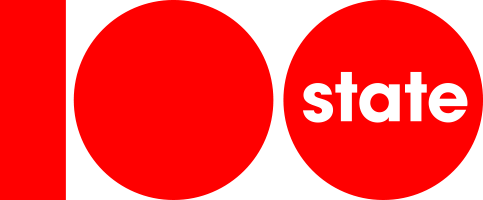By Kyle Freund, as told to Violet Jinqi Wang
If there is one thing I hope people take away from knowing me, it’s that you should think about where your food comes from. And how it got there.
Sometimes, when people hear that I work with Fairtrade America, they question me. “Oh yeah? How do you know what’s fair?”
To be honest, I don’t. It’s something that varies by context, culture, and time. But I’ve spent the last fifteen years of my career looking for the answer.
I grew up on a small, 60-cow dairy farm. I am one of six boys. We were all fortunate enough to pursue our own path. But in 1996, we sold our family farm. It was an era of consolidation, and many small farms were driven out of business (something we see continuing today). Growing up seeing how we struggled made me wonder — what is fair? How do we value the work of farmers?
I always stayed close to agriculture, even if I wasn’t working on a farm. I joined the Peace Corps and moved to Guatemala for two years. I lived and worked with small farmers in the Cuchumatan Mountains and helped them promote their businesses. I gained insight into how people live and survive with no running water or heat.
The experience made me realize that there is no simple solution to poverty.
When I came back to the U.S., I picked up a job in an advertising agency doing public relations, but it was difficult from the start. Going from working one-on-one with small-scale farmers to pitching healthcare furniture to magazines left me disconnected.
I like to work where I am inspired. I love getting into the details of a topic that’s difficult and complicated and learning how to communicate it to the public. So I made the switch to coffee, finding a job with Coffee Kids, a tiny nonprofit based in Santa Fe, N.M.
They had an interesting perspective on philanthropy — they focused on solutions that came from the community. We worked in the world of coffee, but we supported education or healthcare programs, economic diversification, biodiesel projects — whatever the community deemed important. Their goal was to reduce dependence on coffee for income and help create more vibrant, sustainable communities.
The model was different from the philanthropic approach of many companies, such as the buy-one-give-one business model that’s popular, or the trend of exporting a solution that your company wants to fund, like a school or otherwise. In the long-term, these campaigns often prioritize making the companies look good, and they can do more harm than good for the local economy. In contrast, a community-generated development model invests in the tools and resources local residents need to grow their own initiatives.
I now work remotely as the media manager for Fairtrade America, the US-member of Fairtrade International. If you buy chocolate or bananas at Willy Street Co-op, you should be pretty familiar with our Fairtrade mark — a little guy waving at you in front of a blue and green background. Or just check out Madison’s own Cafe Fair from Steep & Brew Coffee.
There is so much competition for people’s attention that it’s often hard to keep a concept like Fairtrade top of mind. That’s the beauty of the mark — It’s quick, requires minimal mental effort, and raises awareness. In the U.S., there are several organizations that certify products as fair trade. My organization, Fairtrade America, and Fair Trade USA are the two most common ones. While our standards differ—and I think ours put farmers and workers in a better position—either fair trade certification means it’s better than the conventional way of trade.
With fair trade, it’s important to look beyond the mark. When you go shopping, don’t just grab whatever’s cheapest. Stop and think a little bit: How is it being produced? Who is making these products? Maybe our ravenous buy-buy-buy mentality isn’t the best way. What you buy is what you support and that choice matters.
Often, we just don’t pay enough for products to be sustainable. Our system places a priority on cheap as opposed to affordable. We need an accessible, affordable food supply, not cheap junk that harms our health and others’ lives. In the U.S., the price of milk, eggs, and meat continues to go down, and with them, the prices paid to farmers sink. What are we prioritizing in the market?
Looking for fair trade or local products can help maintain an affordable food supply without sacrificing quality and the well-being of farmers. In the case of Fairtrade, we set minimum prices for most products that are negotiated in consultation with farmers and traders. For coffee, that’s $1.40 per pound. If a company wants to label something Fairtrade, they have to pay at least that amount even if the market drops below it and in most cases they pay well above that based on quality and other factors. In addition to that minimum price, there is a premium of $0.20 per pound that goes directly back to the community, giving them additional funds to invest in their businesses, community or environment.
Many of the farmers we work with are dependent on one crop and have few other options to retrain or diversify income. If the market price tanks, they can’t support their families. Take coffee again, it’s a once a year harvest and farming families frequently receive less than what it costs to produce, which can result in a host of problems.
I serve on the board of a nonprofit called Food 4 Farmers. The organization came out of research in 2008 in Nicaragua where it was found that more than two-thirds of farmers were unable to maintain their normal diet for three to eight months of the year (something my family never faced growing up, no matter how tight things got). Between the harvest time and when money comes in, many farmers experience the devastating “los meses flacos” or “thin months.”
Looking at coffee is a good indicator for the future of agriculture in general. According to recent research by the Climate Institute, only 50 percent of the land suitable for growing will remain in 2050 due to climate change. Young people are leaving coffee. The average age of a coffee farmer in Africa is 60 (for reference, it’s 58 in the U.S.), despite the fact that 60 percent of the African population is under 24 years old. Companies are starting to realize that all these years of downward pressure on prices at all cost has led to people not having money to invest in their farms, their children, or their communities.
After working in and around fair trade for all these years, I have come to understand that being fair goes well beyond a reasonable price. It’s about balancing the power dynamic between farmers and traders. It’s about farmers being treated as partners, not workers. It’s about sharing information. It’s about taking that split second when you pick up a chocolate bar to ask yourself, ‘How did this get here?’

